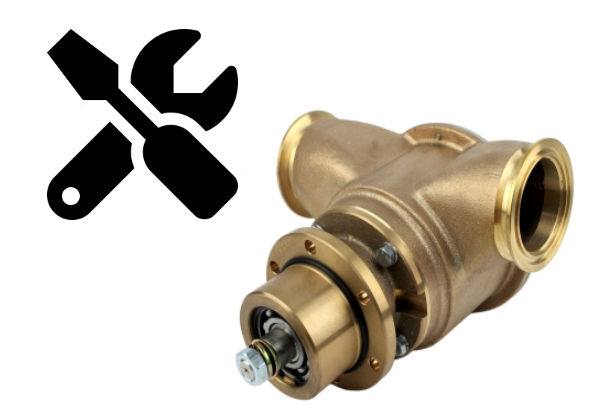Signs Your Boat Engine Cooling Pump Needs Replacement
2024 Jan 12th
Proper engine cooling is essential for the longevity and performance of your boat's engine. The cooling pump plays a crucial role in maintaining optimal temperatures and preventing overheating. Recognizing signs of a failing cooling pump can save you from costly engine damage and ensure a smooth sailing experience. In this blog post, we'll explore key indicators that suggest it might be time to replace your boat's engine cooling pump.
1. Consistent Overheating
One of the most obvious signs of cooling pump trouble is persistent engine overheating. If your engine consistently runs hotter than usual, it could signal inadequate coolant circulation, pointing to a potential cooling pump issue.
2. Coolant Leaks
Keep an eye out for visible coolant leaks around the cooling pump, connected hoses, seals and gaskets. Any leaks could compromise coolant flow rate, leading to inefficient cooling and increased risk of engine overheating.
3. Unusual Pump Noises
Strange sounds emanating from the cooling pump, such as grinding or whining, may indicate wear and tear on the pump's bearings or impeller. Damaged impellers can hinder proper coolant flow, contributing to overheating problems.
4. Vibration or Wobbling
Excessive vibration or wobbling of the cooling pump can be a red flag. Such irregularities may be a sign of misalignment or internal damage, affecting the pump's efficiency and potentially leading to failure.
5. Weep Hole Leakage
Some cooling pumps are equipped with a weep hole that releases a small amount of water as an early warning for seal failure. If you observe fluid dripping from this hole, it may be an indication that the pump's seals are compromised.
6. Reduced Water Flow
During boat operation, monitor the water flow from the exhaust. A noticeable decrease in water flow could suggest a problem with the cooling pump, impacting its ability to circulate coolant effectively.
7. Excessive Play in the Pulley
With pulley driven pumps, check for any play or wobbling when moving the pulley connected to the cooling pump. This could signify issues with the pump's bearings and/or shaft that may require attention.
8. Visual Inspection
Regularly inspect the cooling pump for signs of corrosion, rust, or physical damage. Addressing these issues promptly is crucial for maintaining the pump's performance and longevity. The impellers condition is crucial to any pump’s performance; regular inspection and replacement of the impeller will prevent 99% of issues.
9. Temperature Fluctuations
Sudden fluctuations in engine temperature could be indicative of an intermittent cooling pump issue. If you notice irregularities, it's advisable to have a marine mechanic assess your cooling system.
As you navigate the waters, vigilance toward your boat's cooling system is paramount to a smooth and trouble-free journey. Recognizing the signs of a failing cooling pump can save you from potential engine damage, ensuring a safer and more enjoyable boating experience. Remember, regular maintenance and timely replacement or repair of the cooling pump are crucial. If you find yourself in need of a reliable replacement, check out Big Blue Ocean Marine's engine cooling pump products, where top-quality JMP Marine cooling pumps are available to keep your boat engine running at its best. Your engine deserves the best care, and Big Blue Ocean Marine is here to provide it.

